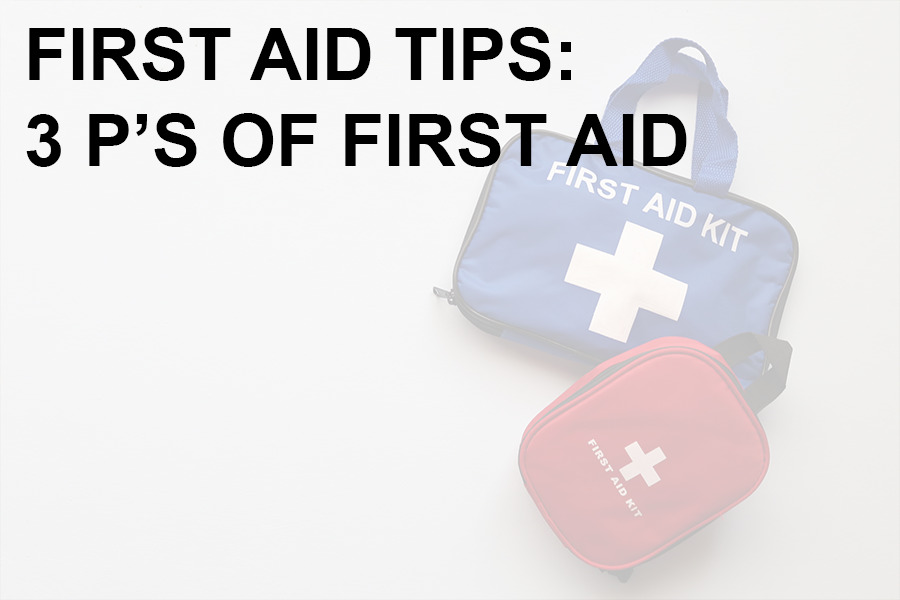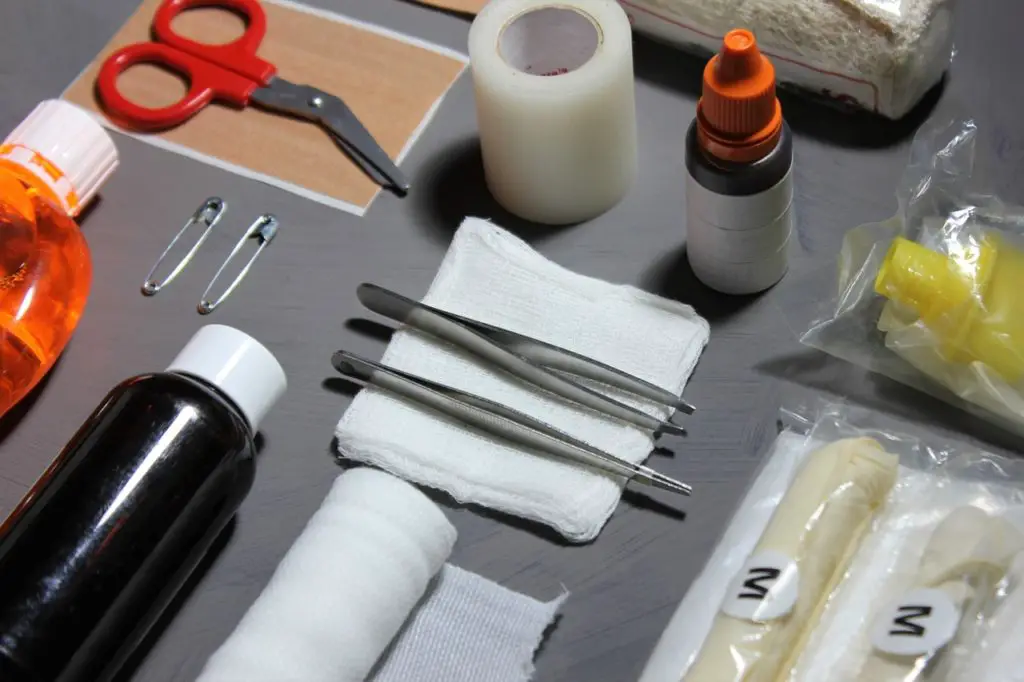In the chaos of an emergency event, it can be difficult for an average person to find a way to be helpful. The three P’s of first aid are a simple and easy way to remember what the aim of first aid is and how to approach it. It can be hard to remember what to do in an emergency, but the three P’s are a guideline that everyone should learn, not just first responders or medical personnel.
What are the 3 P’s of first aid?
- Preserve life
- Prevent deterioration
- Promote recovery
Preserve Life
The first “P” is to preserve life. The first life to preserve is your own. Just like you’re taught about oxygen in an airplane, you need to take care of yourself first in order to better help those around you. Don’t run into a situation with blinders on. Take a few moments to assess the situation. If you’re familiar with DRABCD, this is where it would apply.
Assess the situation:
- Is there traffic, boats, machinery etc. that may further harm you or others?
- Are there electrical lines down?
- Is there an active shooter that still may be present?
- Are there leaking gases or chemicals?
- Are there multiple people hurt, and who should I try to help first?
- See if you can determine the MOI (mechanism of injury)
The next step is to assess the injured. There are a few different ways to do this depending on your level of training and comfort. Remember, we are not professionals and are only doing what we are able to in order to keep the person(s) alive.
- If you are CPR certified, you’ve learned how to apply C.A.B. for people who are unresponsive and not breathing. (Compressions, Airway, Breathing)
- If you are familiar with what the Red Cross or Boy Scouts teach, you may use A.B.C.D.E. assessment method. (Airway, Breathing, Circulation/Bleeding, assess for Disabilities, assess for threats in the Environment.)
- If you are / were in the military, you may follow the M.A.R.C.H. protocol which prioritizes bleeding. (Massive hemorrhage, airway, respirations, circulation, head injury/hypothermia)
Although the American Heart Association has put more emphasis on chest compressions and maintaining blood flow first, these methods share many of the same priorities: make sure blood is flowing, make sure the person can breathe, and make sure that the person will not bleed to death.
Remember that this assessment should only take a few seconds and is meant to help you address the most critical items to keep someone alive. And don’t forget that using PPE (like gloves or a CPR shield) is considered a way to preserve life as well.
Prevent Deterioration
The second “P” is to prevent deterioration. Once first aid has been given on those most critical life-saving concerns, you want to do what you can to ensure the situation doesn’t get worse, both for the individual you’re helping and the entire situation. This is a good time to do a secondary assessment. The D.O.T.S. and S.A.M.P.L.E. methods are good ways to identify other non-life-threatening injuries or determine what the issues are. You may need to take some of the following steps:
- Get consent to rendering first aid if the person in conscious and responsive
- Immobilize any broken or sprained limbs
- Move people to safety – but only if there is no chance that there is a spine, neck, or back injury. Moving the injured may make it worse.
- Put the person in the recovery position if needed
- Observe areas of bleeding and check tourniquets or bandages
- Protect someone who is having a seizure
- Keep bystanders or people nearby safe and away from danger
- Help others who may not have life threatening injuries
- Call for help if you haven’t already
- Make sure that the person’s ability to breath and their responsiveness doesn’t change
Promote Recovery
The third “P” is to promote recovery. An injury can be an emotionally stressful situation for the person. They might be embarrassed or angry. Do what you can to reassure them and keep them (and yourself or others) calm. Steps you might take:
- Try to keep them warm if you’re in a cold environment or treating for shock
- Keep them cool by providing shade or water in extreme heat
- Provide support to the head or limbs to make the person more comfortable
- Talk to them to keep their minds off of their injuries
- Try to cool any burns they may have
Although you are trying to help, there are a few things you should not do:
- Don’t make promises that can’t be kept
- Don’t allow yourself to get angry at the injured
- Do not give and medications, even OTC drugs, until a medical professional arrives
- Don’t move or touch anything that might be used as evidence for a crime
Final Thoughts
The 3 “P’s” of first aid are a good reminder of what our role as first aid providers is. Remember, you’re not a doctor so don’t expect to be able to cure them. Do what you can based on your training and wait for help to arrive.




